Sedum: Popular Species And Top Growing And Caring Tips
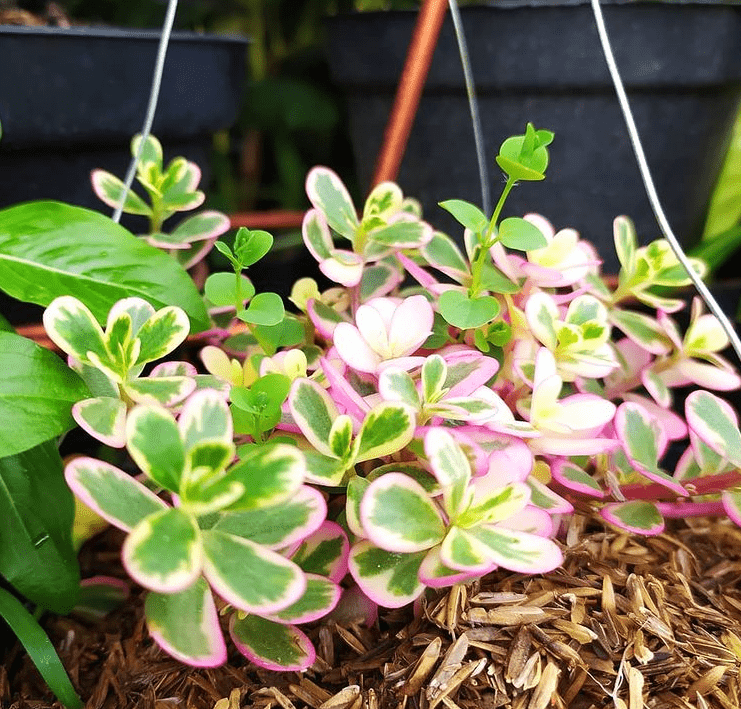
What is Stonecrop?
Sedum is a genus of easy to grow succulents named commonly Stonecrop, but recently most people call them just “Sedum”. These plants are so-called because in their native settings they typically grow in stony, rocky areas. This genus belonging to the Crassulaceae family has several hundred succulents of varied arrays of flowers, foliage, and habits. Sedum plants are popular garden plants but they can also use them as houseplants if they find sufficient sun exposure. Also, their few nutrient needs make them a popular and a great choice for all plants lovers. Also, some Sedum species are edible or used for their medicinal properties, such as S. acre and S. spectabile.
Find out in this article the most beautiful Sedum species and how to care for them!
Sedum species
1- Sedum morganianum
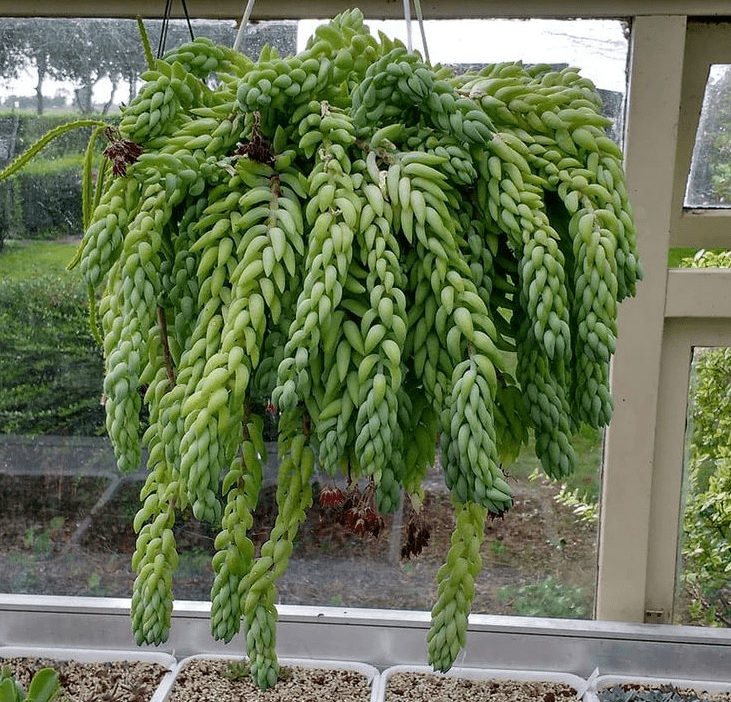
S. morganianum, commonly known as burro’s tail, donkey’s tail or horse’s tail, is a flowering plant of the Crassulaceae family. The stems of this perennial Sedum are pendulous and bear overlapping, fleshy, blue-green and lance-shaped leaves. Also, beautiful pink to red blossoms appear in terminal clusters of 1-6 flowers during summer. This easy to grow plant, is a great choice for containers, hanging baskets or as a houseplant.
2- Sedum acre
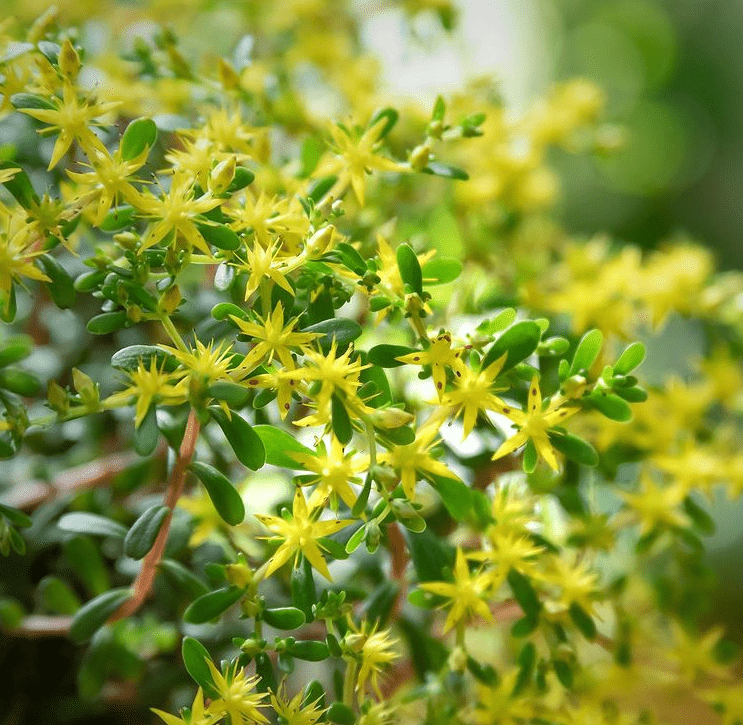
S. acre, commonly known as Goldmoss Stonecrop or Mossy Stonecrop, is a tiny, carpet-forming, evergreen succulent belonging to the Sedum genus. This beauty has short, tangled stems covered with conical, bright green leaves (sometimes tinged with red). From June to July, small clusters of tiny, star-shaped, bright yellow flowers appear to add a magical touch to your garden. Goldmoss fits perfectly into a rock garden and thrives in poor soils, such as sandy or gritty compositions.
3- Sedum spurium

S. spurium, also known as two-row stonecrop or Caucasian stonecrop, is a slow-growing succulent native to the Caucasus. This drought-resistant plant has thick, round green leaves toothed at the edges which grow in two rows along the purple-tinted stem. Small star-shaped flowers with short pedicels are produced from July to August and change the color with the varieties. They can be red in Sedum spurium “Dragon’s Blood” and Sedum spurium “Voodoo” and pink in Sedum spurium “Tricolor”. This sedum types are excellent choice for hot, dry spots in the yard and make a good groundcover.
4- Sedum album
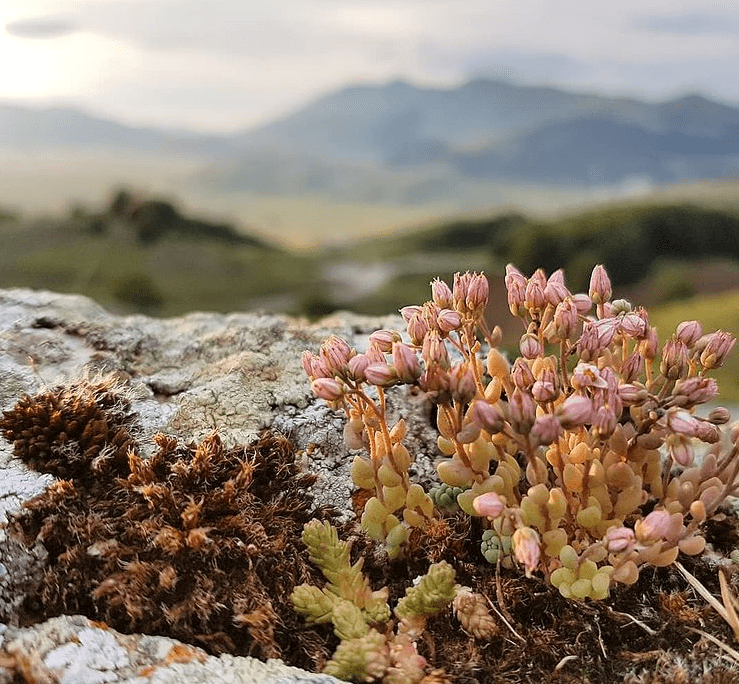
S. album, named commonly White Stonecrop, is a flowering plant of the genus Sedum in the family Crassulaceae. This creeping, mat-forming plant has small, linear-oblong, cylindrical to flattened, green leaves that turn reddish-brown in autumn and winter. From June to August, it explodes in masses of tiny, white, star-shaped flowers. Moreover, this species is very tolerant and can grow in nutritionally poor soil.
5- Sedum telephium
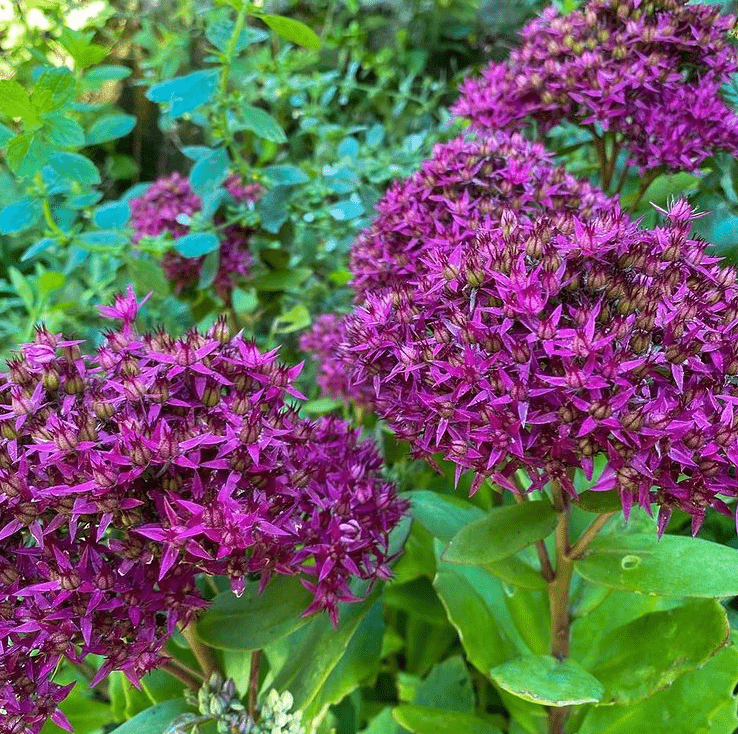
S. telephium, known as Orpine, Livelong or Live-forever, is a succulent, perennial groundcover native to Eurasia. This plant has fleshy stems bearing flat, coarsely-toothed, elliptic, blue-green leaves. From July to August, Orpine blooms in dense clusters of tiny, star-shaped, rosy-pink flowers that make the plant a beautiful addition to any garden.
6- Sedum spectabile
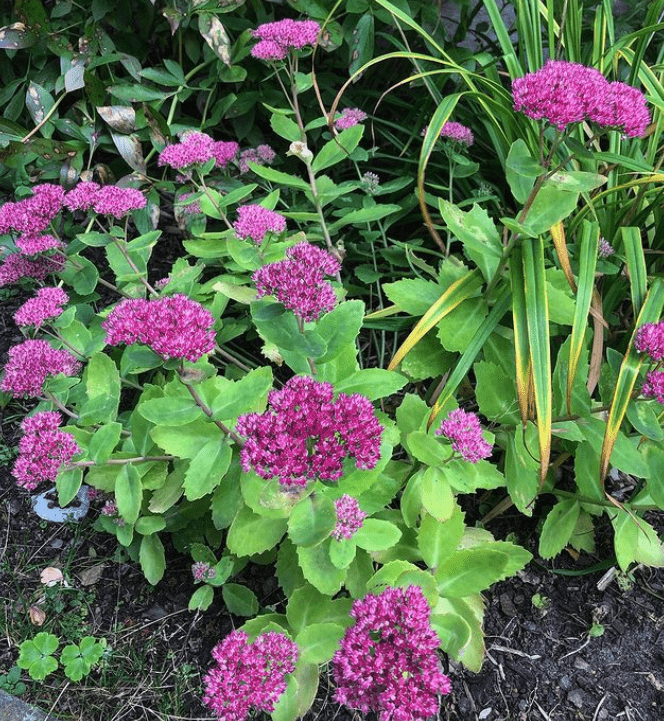
S. spectabile, named commonly Ice plant, is a hardy ornamental succulent in the Crassulaceae family. It is one of the most popular varieties of cultivated plants. This plant has succulent and frosted stems, hence its common name, and also attractive, shallowly scalloped, broadly elliptic, blue-green leaves that grow in rounded mound. In summer, starry, dusky-rose colored flowers bloom on top of sturdy stems to bring life to any garden. In addition, Autumn joy sedum is a very popular spectabile variety.
7- Sedum dendroideum
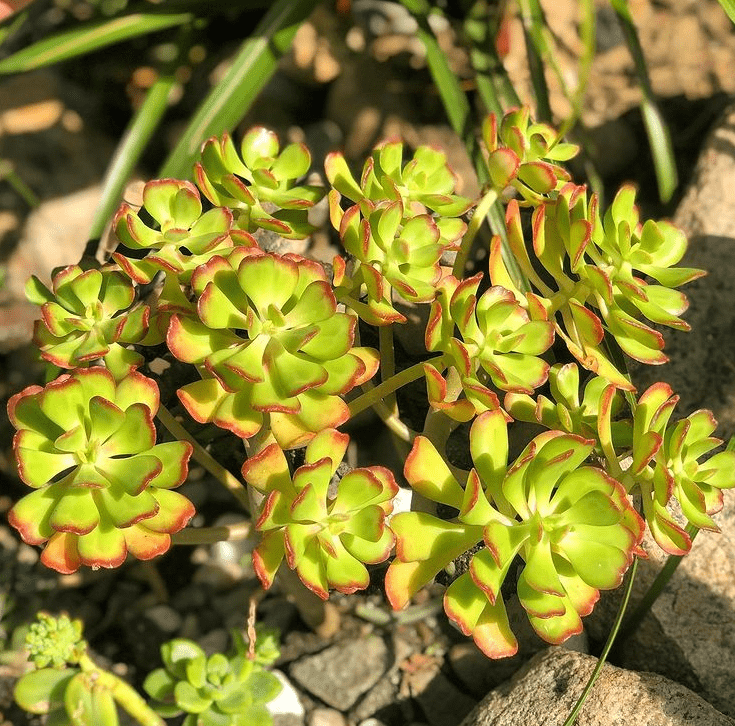
S. dendroideum, commonly known as shrubby stonecrop, the tree stonecrop or the false hens-and-chickens, is a perennial member of the Crassulaceae family. It is a succulent shrub growing to 90 cm height. Furthermore, this plant forms a rosette of green, spatulate leaves with red subepidermal glands all along margins. Also, this upright growing plant produces star-shaped, bright-yellow flowers in late winter and early spring.
8- Sedum reflexum
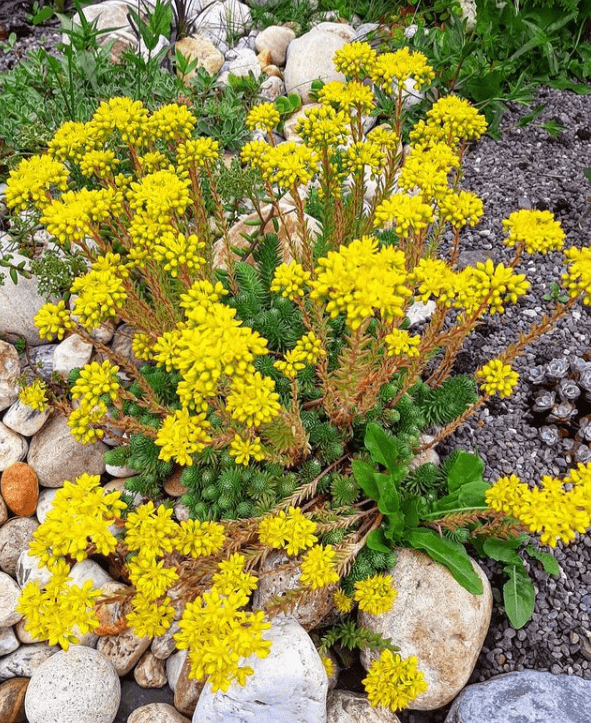
S. reflexum, commonly known as Reflexed Stonecrop or Blue Spruce Stonecrop, is a perennial succulent native to the UK and other parts of Europe. This fast-growing plant resembles a Spruce tree by its needle-like, blue-green leaves that turn salmon pink in cold weather. From July to August it flowers in lightly fragrant, star-shaped, yellow flowers. This Sedum plant we can grow it not only as a ground-cover but also as a trailing plant.
9- Sedum dasyphyllum
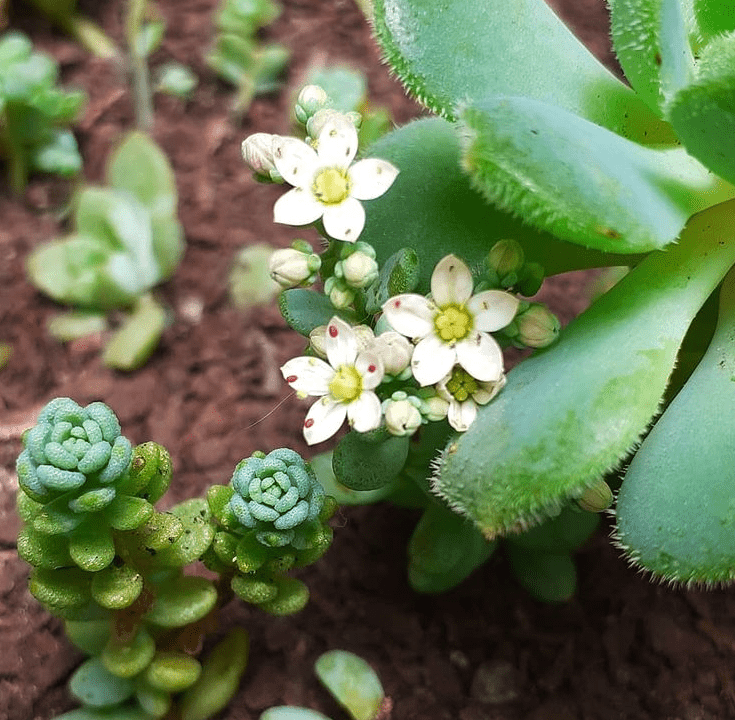
S. dasyphyllum, commonly known as Corsican stonecrop or thick-leaved stonecrop, is a low-growing succulent of the Crassulaceae family. This attractive species has tiny, round, glaucous leaves that can vary from turquoise to silver and will blush lavender in full sun. Then, during the early summer, this beauty produces small, star-shaped, white flowers with little black dots on the petals and green ovaries.
10- sedum rubrotinctum
S. rubrotinctum, commonly known as jelly-beans, jelly bean plant, or pork and beans is a perennial ornamental succulent of the Sedum genus. This very popular plant has sprawling stems covered with round, bean-like leaves. These leaves are green with red tips that turn to bronze during summer. During spring, small, star-shaped, yellow flowers are produced.
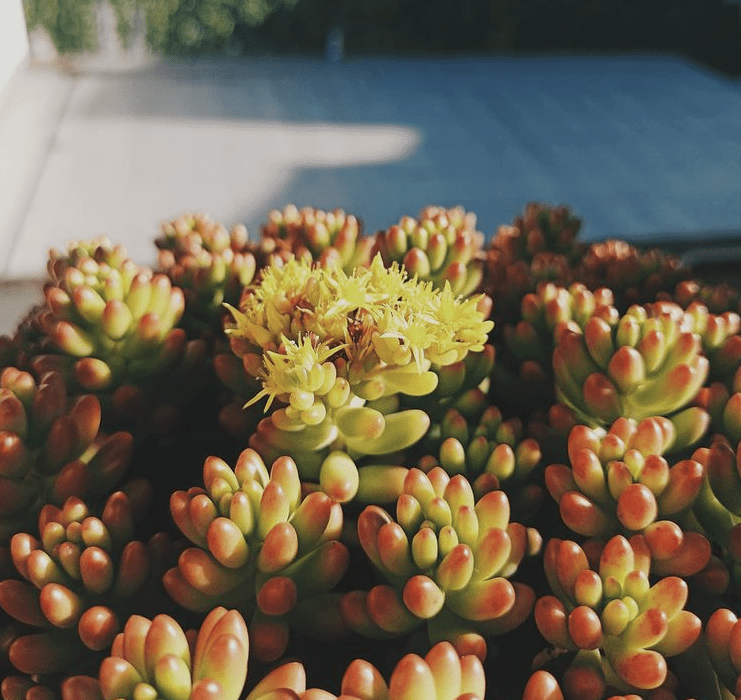
Sedum propagation
Sedum plants can be propagated by:
Division
It is well adapted to bushy species and can be done at the end of winter, by dividing the tuft into 2 or 3 parts according to its size.
Leaves or stems Cuttings
Take short stems of the stem, or just a leaf and Place them on a layer of sandy cuttings substrate, both take root easily without even being buried.
Sowing
Sedums can also be grown by seeds sowing. In summer, place the seeds in the shade and water them. However, most of the sedum seeds offered are for the low growing, ground cover varieties, not tall sedum. Taller sedums tend to be hybrids, and they won’t grow true from seed. So it is preferable to start off with cuttings or divisions.
Sedum care
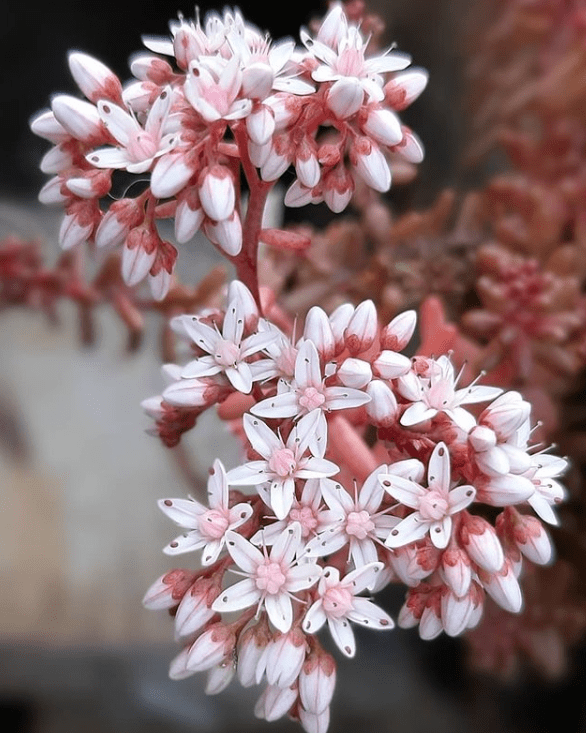
Growing Sedum plants is a very easy task, you have just to follow these steps:
Light
Generally, most Sedums like full or part sun, so put them in a location that provide them with good light even in winter.
Water
Regular stonecrop watering is necessary during the growing season (Spring to Automn). Once the active growing season is over, you should greatly reduce watering to prevent winter rot.
Soil
Sedums need a neutral, well-drained soil for good growth. They can also adapt to sandy or clay soil.
Temperature
Sedums are very resistant and endure excessive heat, but also extreme cold.
Fertilizer
Sedum plants generally prefer lean conditions so go easy on the fertilizer. An organic compost applied is best because chemical fertilizer can lead to stretching and flopping.
Pests and diseases
Slugs and snails most often attack Sedums. Other parasites such as Aphids and mealybugs are mostly found in greenhouses. The plant is also exposed to the risk of root rot during excess water.
Did you find this helpful? Share it with your friends!